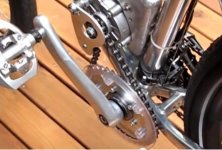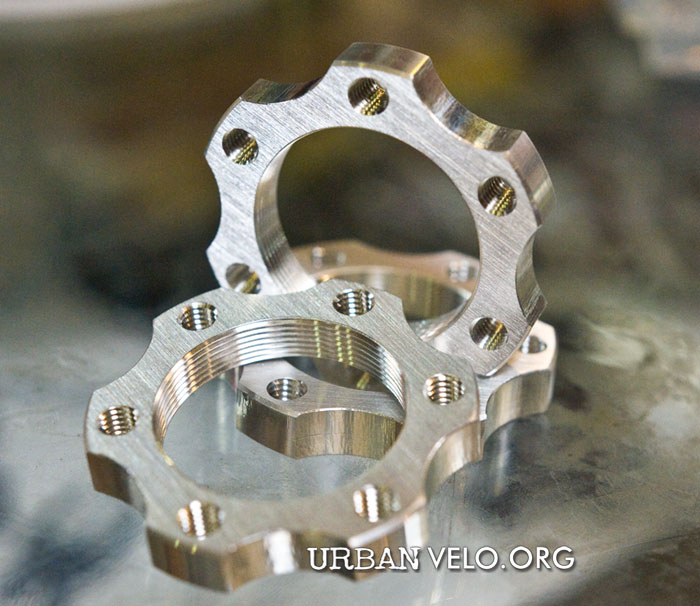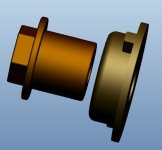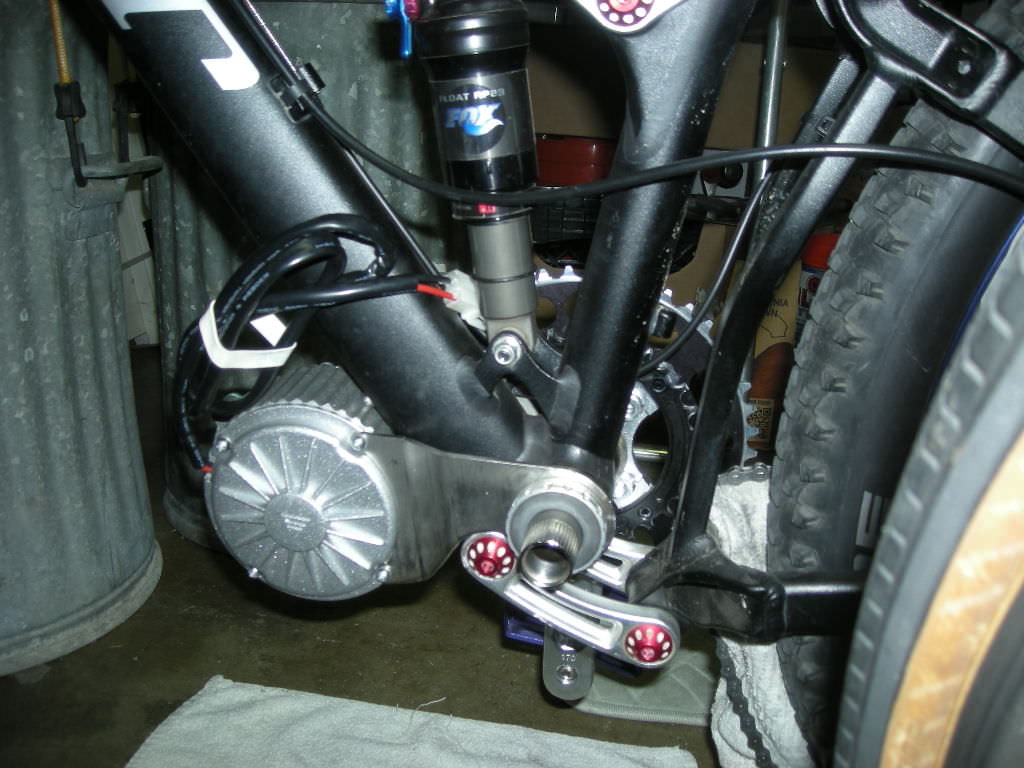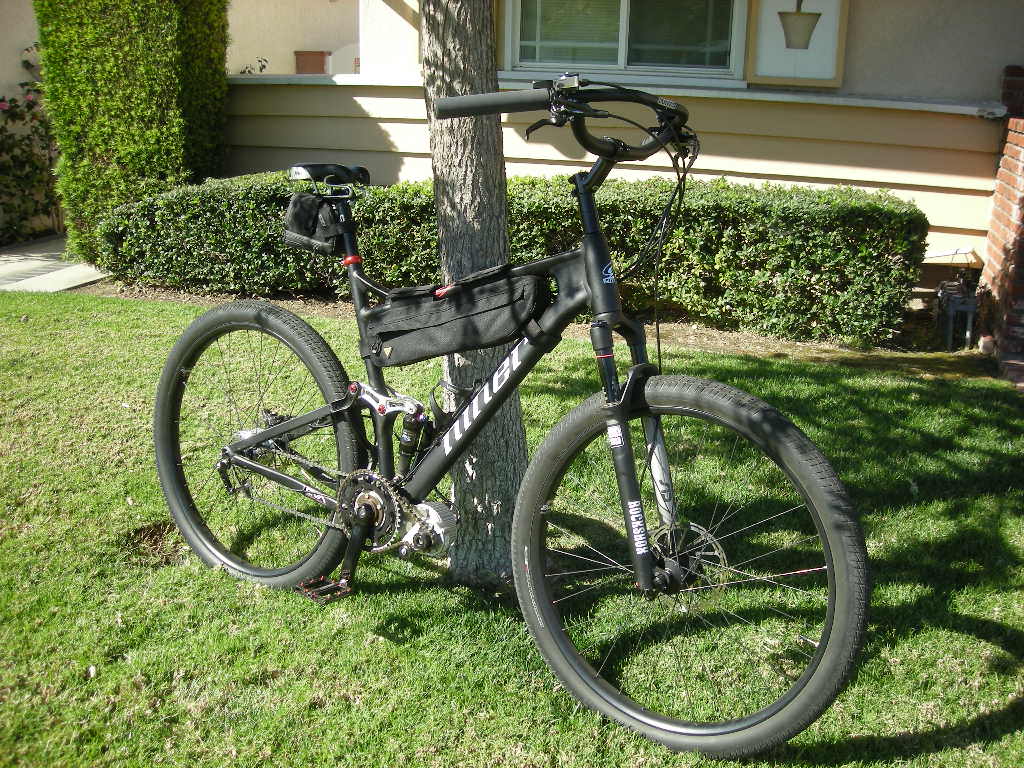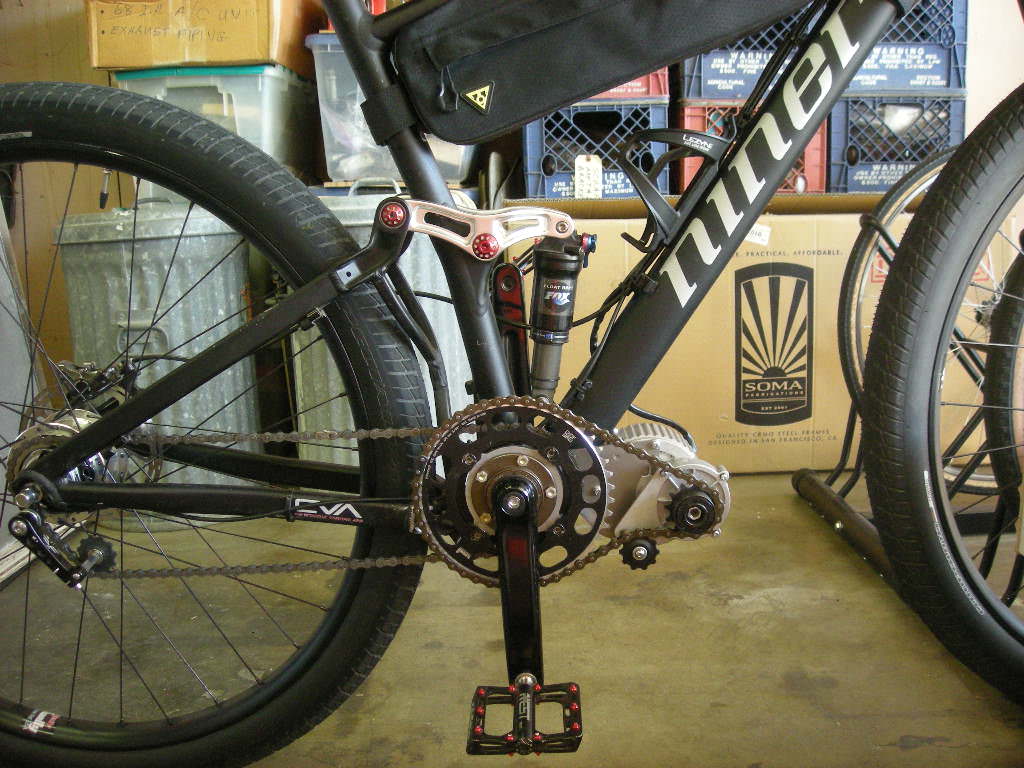Santa'sLittleHelper
100 W
In an effort to give my aging lungs a boost when climbing hills off-road, I have decided to embark on a light weight mid-drive project that will solely be used when climbing hills when I’m out of lungs or legs. The electric motor, battery and other related essentials will be additional dead weight on the bike until needed, thus the system must pedal with the least drag possible from all the E-assist farkles. I believe the best way to achieve this is to use a crank arm freewheel sprocket up to a small geared motor (also with a freewheel sprocket) within the frame triangle.
The motor I have selected is an old school brushed MY1018 450W 24V that is stated to be able to run 36V without issues. It is the smallest and lightest geared motor I could find that seemed to meet my needs. The one I purchased is said to be rated for 25A as well, but I am not sure it will run reliably at higher than 18-20A. As I understand it, this motor is normally run at 15A on old Currie eZip Trailz electric bikes (in a slightly different build form), but each buyers build specifications can be unique. It is not clear if this motor is produced differently to achieve its’ stated 25A rating (?).
I picked up this motor with various rear stay mounting parts and a YK31C controller. I also have a left side under bar thumb throttle left over from a prior project. This is my first custom build, so please bear with me if some of my questions seem trivial to the electrically experienced.
Here are the motor and controller stated specifications:
MY1018 - 24V 450W GEAR REDUCTION “BRUSH” MOTOR
(Came with rear stay mounting bracket, sprocket, chain, nuts & bolts)
Specs:
- 24 Volt, 25A Rated Load, 2.5A No Load
- 1.43Nm at the output sprocket @440 RPM
- 12 gauge power leads
- Reduction Ratio: 9.78:1
- 9 tooth sprocket for 1/2'' x 1/8'' pitch standard bike chain
- Direct Drive (No Free Spooling)
- Alloy case for good heat dispersion.
- Bicycle style mounting bracket Included. (Suits the 250w and 450w models)
- Suitable for Forward and Reverse Operations
- Weight: 2.2KG / 4.85LB (alloy motor and frame!)
YIYUN TECH - YK31C
(Brush motor controller for electric bicycle & scooter)
Rated voltage: DC 36V
Current limit: 28A
Rated power: 500W
Matching motor: DC brushed motor
Under Voltage Protection: 31.5V
Wire Interface Definitions
Battery: Thick Black (Power Negative) / Thick Red (Power Positive)
Motor: Thick Yellow (Motor Negative) / Thick Blue (Motor Positive)
Ignition Switch: Thin Red (VCC) / Thin Blue
Indicator: Thin Red (Indicator power output) / Thin black (Indicator Negative)
Brake: Thin Yellow (Brake signal) / Thin Black (Negative Power)
Speed governor: Thin Blue (Speed handlebar Signal input) / Thin Black (Negative Power) / Thin Red (5V Positive Power)
Charge Port: Thin Red (charge input power Positive) / Thin Black (Power Negative)
Brake Light: Thin Red (power Positive) / Thin Black (Power negative)
Initially I will be installing this mid-drive in my Soma B-Side V.2 Belt Drive custom build to test it and work all the bugs out, but plan to eventually move this to my full suspension MTB for climbing off-road hills only. Low speed torque is the application for a 230lb. rider.
The setup will be similar to the kit offering pictured below, but the motor will end up mounted within the frame triangle (not in front of the bottom bracket and below the down tube), because the full suspension MTB can’t accommodate a motor there.
If any experienced builders can chime in with their thoughts and hands-on knowledge regarding the basic setup idea, including any problems they see and/or possible best further motor gearing reduction through the motor to crank sprockets for ideal climbing cadence, please do.
The motor I have selected is an old school brushed MY1018 450W 24V that is stated to be able to run 36V without issues. It is the smallest and lightest geared motor I could find that seemed to meet my needs. The one I purchased is said to be rated for 25A as well, but I am not sure it will run reliably at higher than 18-20A. As I understand it, this motor is normally run at 15A on old Currie eZip Trailz electric bikes (in a slightly different build form), but each buyers build specifications can be unique. It is not clear if this motor is produced differently to achieve its’ stated 25A rating (?).
I picked up this motor with various rear stay mounting parts and a YK31C controller. I also have a left side under bar thumb throttle left over from a prior project. This is my first custom build, so please bear with me if some of my questions seem trivial to the electrically experienced.
Here are the motor and controller stated specifications:
MY1018 - 24V 450W GEAR REDUCTION “BRUSH” MOTOR
(Came with rear stay mounting bracket, sprocket, chain, nuts & bolts)
Specs:
- 24 Volt, 25A Rated Load, 2.5A No Load
- 1.43Nm at the output sprocket @440 RPM
- 12 gauge power leads
- Reduction Ratio: 9.78:1
- 9 tooth sprocket for 1/2'' x 1/8'' pitch standard bike chain
- Direct Drive (No Free Spooling)
- Alloy case for good heat dispersion.
- Bicycle style mounting bracket Included. (Suits the 250w and 450w models)
- Suitable for Forward and Reverse Operations
- Weight: 2.2KG / 4.85LB (alloy motor and frame!)
YIYUN TECH - YK31C
(Brush motor controller for electric bicycle & scooter)
Rated voltage: DC 36V
Current limit: 28A
Rated power: 500W
Matching motor: DC brushed motor
Under Voltage Protection: 31.5V
Wire Interface Definitions
Battery: Thick Black (Power Negative) / Thick Red (Power Positive)
Motor: Thick Yellow (Motor Negative) / Thick Blue (Motor Positive)
Ignition Switch: Thin Red (VCC) / Thin Blue
Indicator: Thin Red (Indicator power output) / Thin black (Indicator Negative)
Brake: Thin Yellow (Brake signal) / Thin Black (Negative Power)
Speed governor: Thin Blue (Speed handlebar Signal input) / Thin Black (Negative Power) / Thin Red (5V Positive Power)
Charge Port: Thin Red (charge input power Positive) / Thin Black (Power Negative)
Brake Light: Thin Red (power Positive) / Thin Black (Power negative)
Initially I will be installing this mid-drive in my Soma B-Side V.2 Belt Drive custom build to test it and work all the bugs out, but plan to eventually move this to my full suspension MTB for climbing off-road hills only. Low speed torque is the application for a 230lb. rider.
The setup will be similar to the kit offering pictured below, but the motor will end up mounted within the frame triangle (not in front of the bottom bracket and below the down tube), because the full suspension MTB can’t accommodate a motor there.
If any experienced builders can chime in with their thoughts and hands-on knowledge regarding the basic setup idea, including any problems they see and/or possible best further motor gearing reduction through the motor to crank sprockets for ideal climbing cadence, please do.



